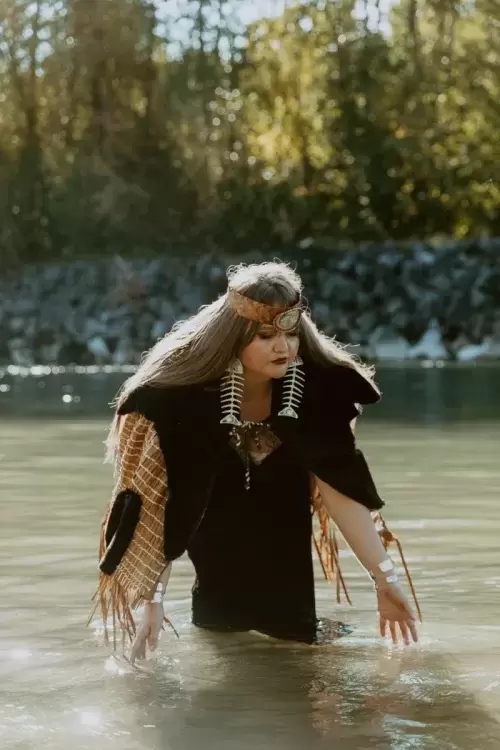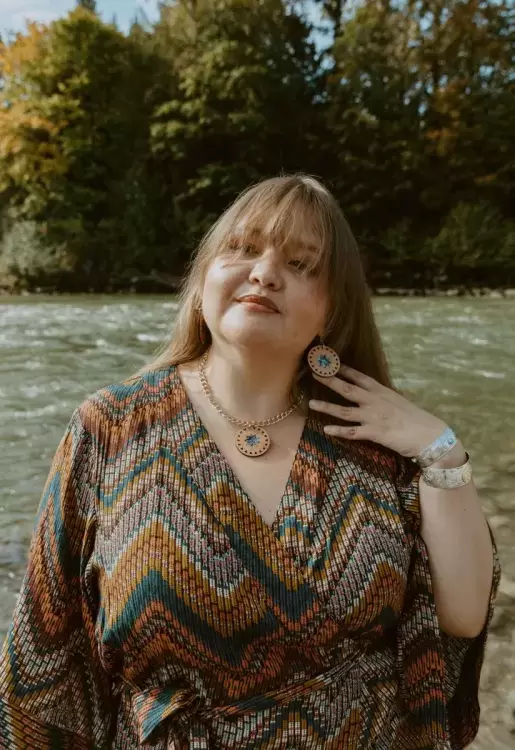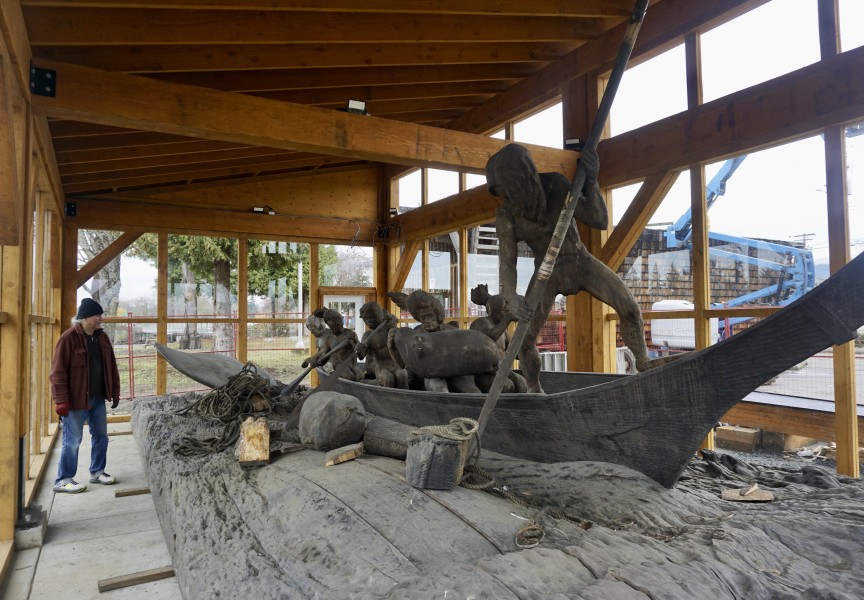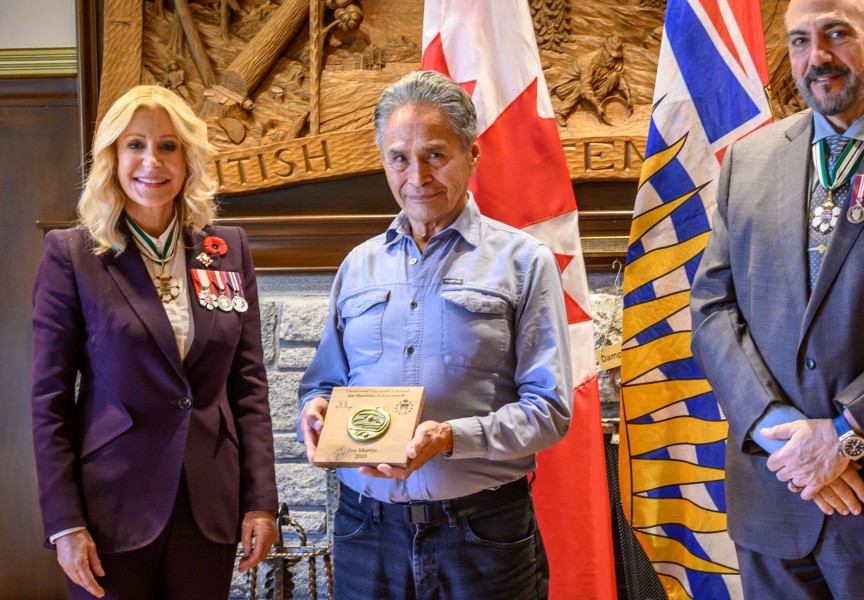Vina Brown has vivid memories of watching her granny, Elsie Robinson, bounce between soaking swamp grass, hanging cedar bark to dry, and weaving baskets while watching sports on the TV inside her Nanaimo home.
There was a grace and ease in her technique that Brown said she absorbed without realizing it at the time.
“The intergenerational transference of knowledge was organic,” she said.
Putting her observations to the test, Brown would retreat into her bedroom where she created hand-strung jewelry that she sold at the local flea market.
“I always had that entrepreneurial spirit,” she said. “Even as a child.”
And yet, it wasn’t something that she tapped into until more recently.
While studying her masters in Indigenous jurisprudence and Indigenous law at the Northwest Indian College in Washington state, the now 35-year-old was struggling to retain the material.
“It was so dry,” she said.
Thinking back to an appliqué beading class she had previously taken at the college when she was 26, Brown started beading as a way to stay focused.
“I'm such a kinaesthetic person and learner that I needed to be in my body,” she said.
The act of beading not only helped her absorb the information, but it brought her back to her childhood. She became inspired to create 200 pieces of beaded accessory jewelry over the following two years that would be gifted during a ceremony at her family’s potlatch in 2017.
“That kind of launched me,” she said. “It was almost like my apprenticeship of feeling worthy enough to sell my art.”
In 2019, Brown created her own jewelry line, Copper Canoe Woman. The designs blend her Nuu-chah-nulth and Haíłzaqv ancestry and culture.
Her latest collection, ʕuy̓aałapʔiš naniiqsu, is dedicated to her granny. Inspired by Robinson’s weaving and basketry, the collection was made “to continue her legacy, her art and designs,” said Brown.
Through her jewelry, Brown said she hopes to transcend Robinson’s Ahousaht worldview into a modern context.
“To bring her along on an energetic and metaphysical level,” she said.
Using natural materials, such as cedar bark and abalone, each of one Brown’s designs has a story to tell.
Traditionally, women artists were revered in Nuu-chah-nulth culture, she explained.
“They were upheld to a high status because they were knowledge keepers,” she said. “Their designs weren’t random. Their designs were stories, they were history and they were proprietary to families.”
Now, she said, it’s her responsibility to continue sharing those stories.
“I don’t take that responsibility lightly,” she said.
Her “light burst” earrings are an homage to that history – “to the depth and curiosity” of her granny, who used to study quantum physics.
“She used to talk about the universe,” Brown recalled. “She used to say that when you break us all down, we are all light. We all come from the same energy.’”
Robinson refused to settle for the “negative colonial narrative” that undermined the intelligence of Indigenous peoples, Brown said.
“She went above and beyond to interrupt and connect us to thinking beyond what the physical eye can see,” Brown wrote, in a description about her light burst earrings. “Our ancestors understood physics, they understood time travel, and being able to travel faster than a beam of light, or expand beyond linear timelines. The evidence is in our stories and knowledge systems.”
Despite being a master of her craft and highly respected within her community, Brown said Robinson’s work was not appreciated in the same way by mainstream society. Galleries and shops would give her insultingly low rates, which she accepted to care for her family.
“She lived in a time where women were second-class citizens,” said Brown. “And if you were an Indigenous woman, you were even lower than that.”
That reality limited access to Indigenous designers and artists, said Brown.
“I’m so happy that this younger generation of youth has access to native designers,” she said. “We now have access to more ways to showcase our culture than we ever did in my day.”
Copper Canoe Woman designs are bold in size and in their expression. They reflect Brown’s personal taste, while also rejecting the suppression so many Indigenous artists continue to face.
“I want [the jewelry] to be accessible to Indigenous people and all people of all socioeconomic backgrounds,” she said.
Unlike her granny was able to, Brown said she is setting that scale.
“I’m the one deciding how much my art is worth,” she said. “And that’s really empowering.”
Through her jewelry, Brown said she hopes to help Indigenous and non-Indigenous people adorn themselves in a way that is deeply rooted in history and culture.
“I want them to walk into that board meeting, or walk into their interview, or walk into a store and feel protected,” she said. “My late-granny used to say, ‘we wear shiny things when we go to potlatches or to parties to protect us – to reflect negative energy.’ I really think about that when I’m making my pieces. These are protection pieces.”









